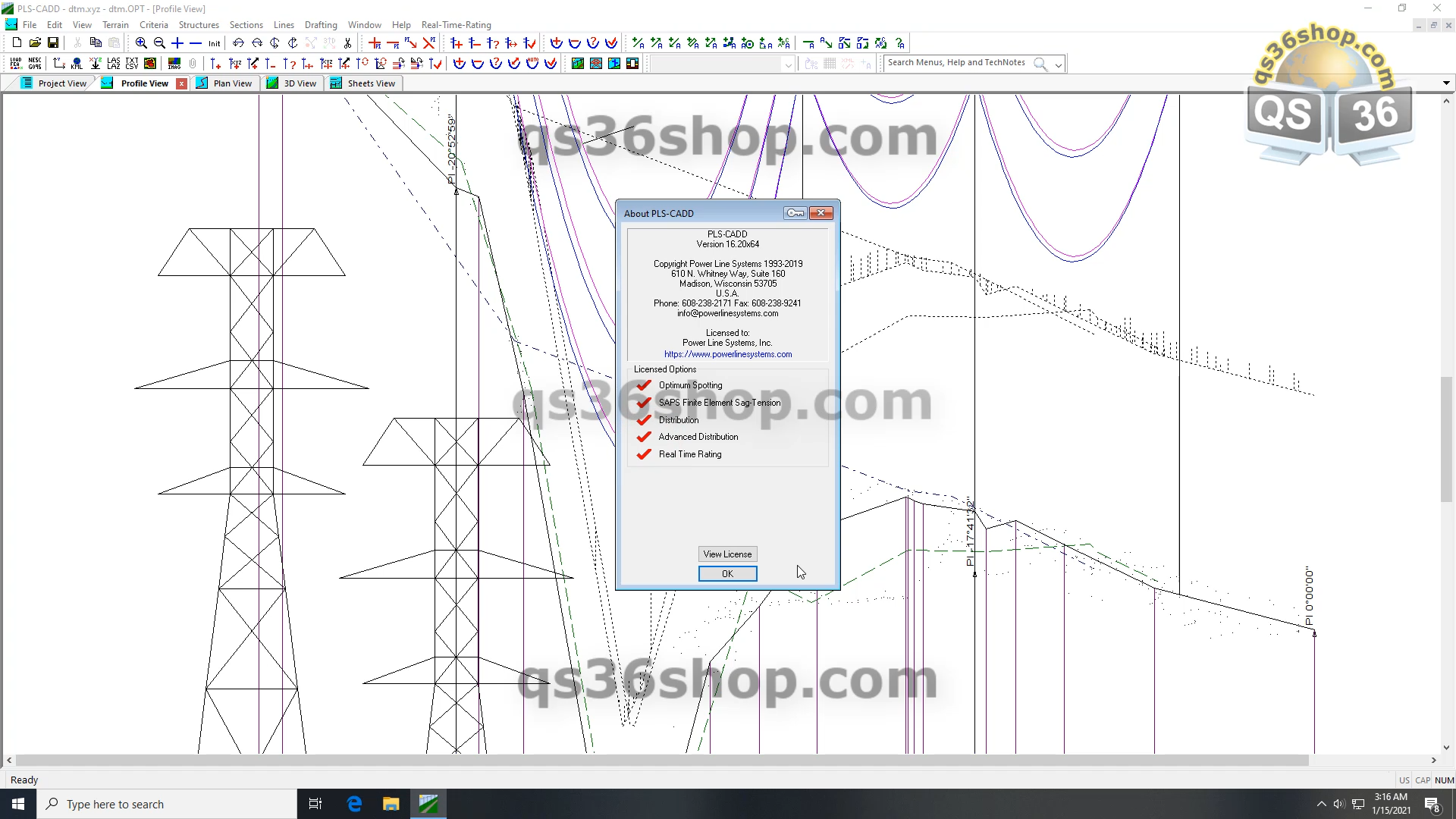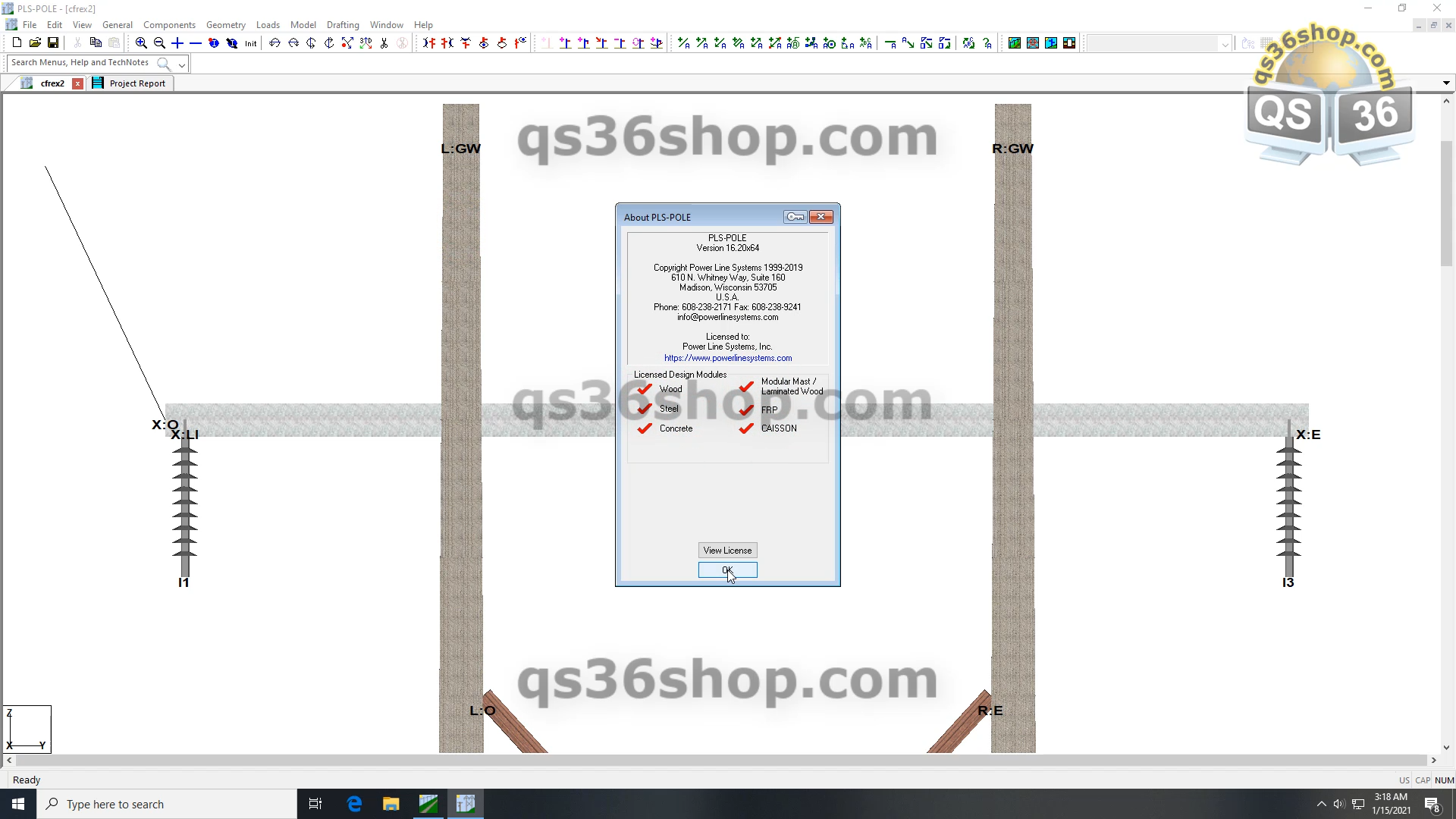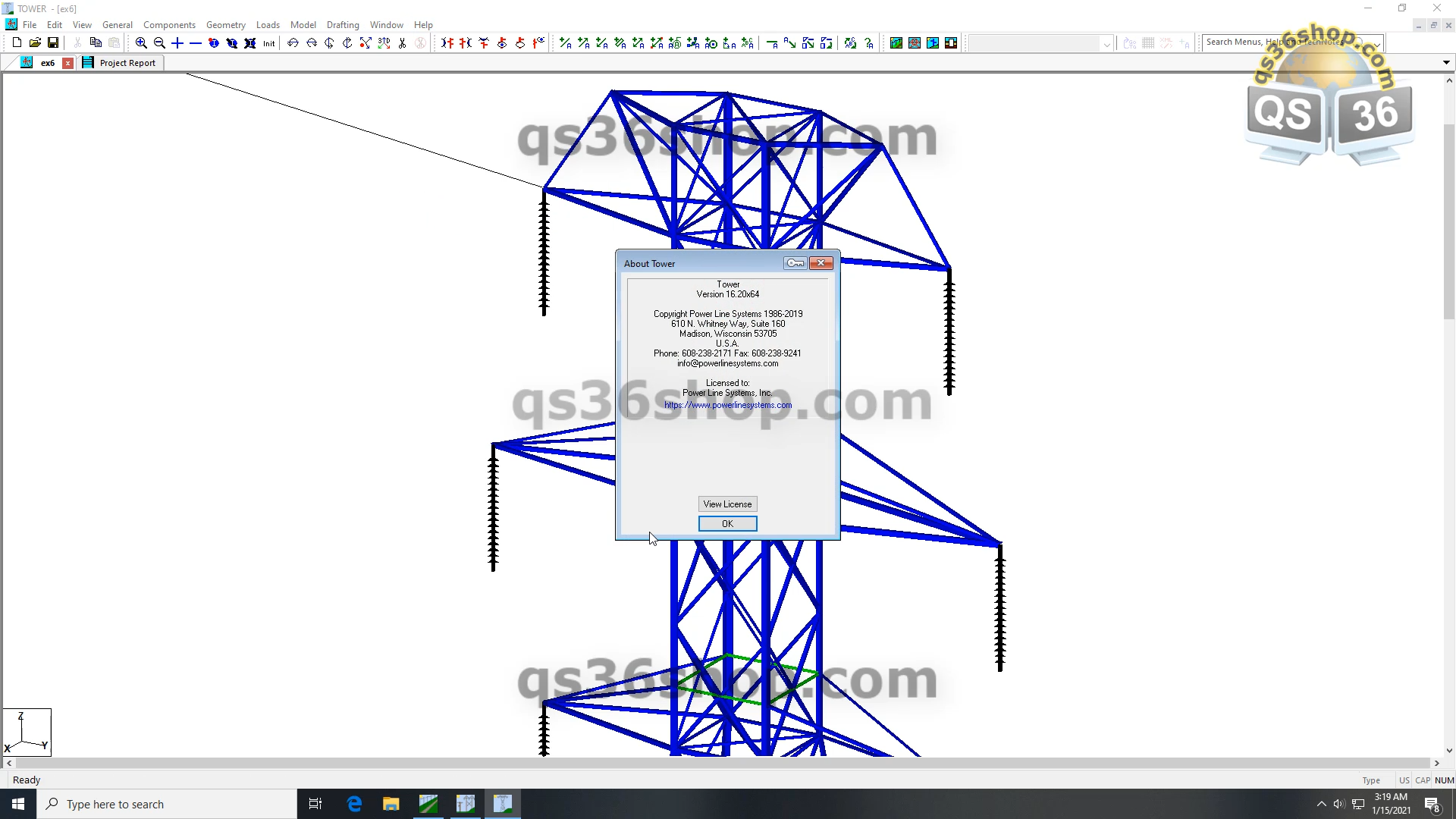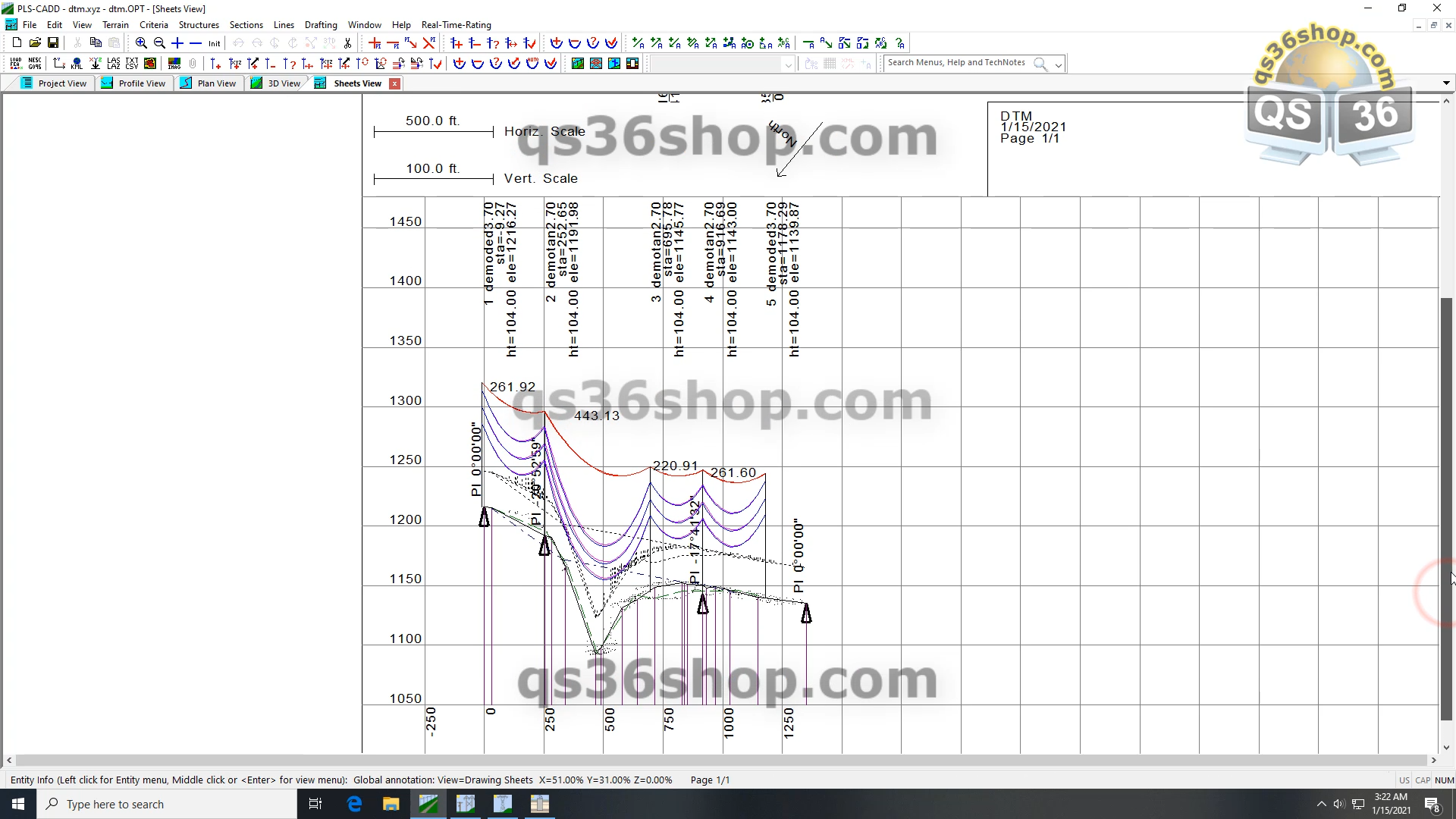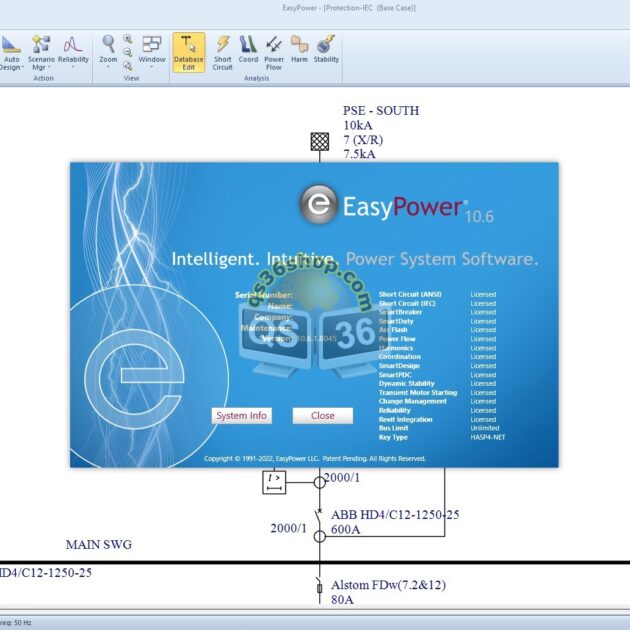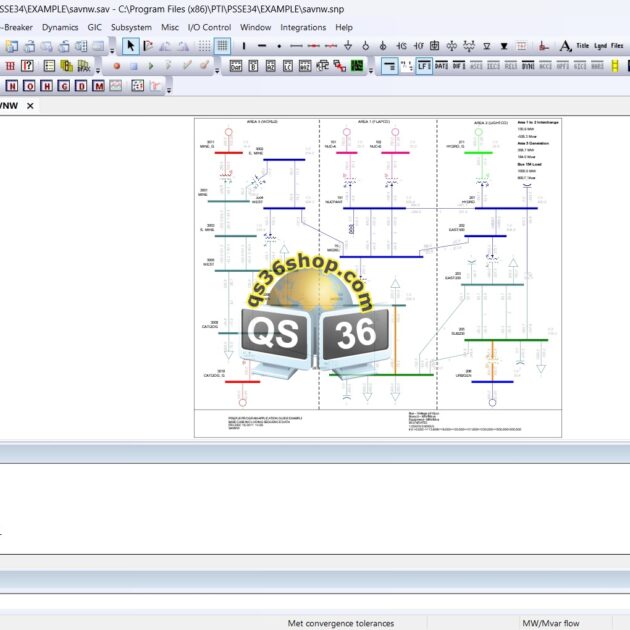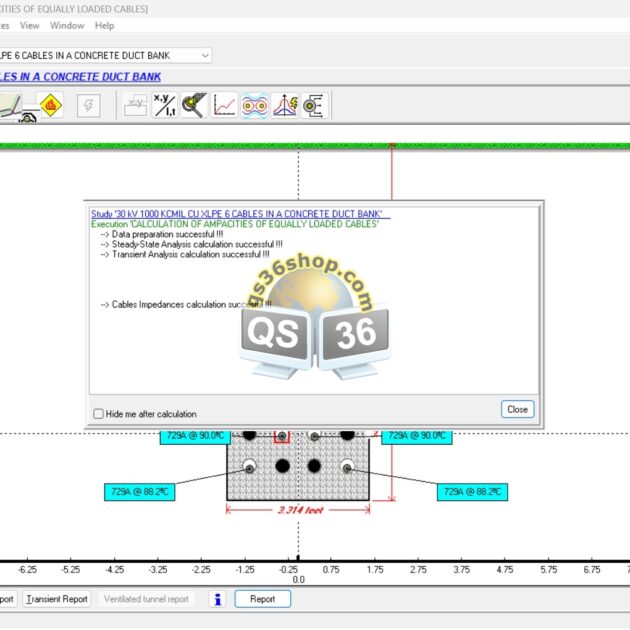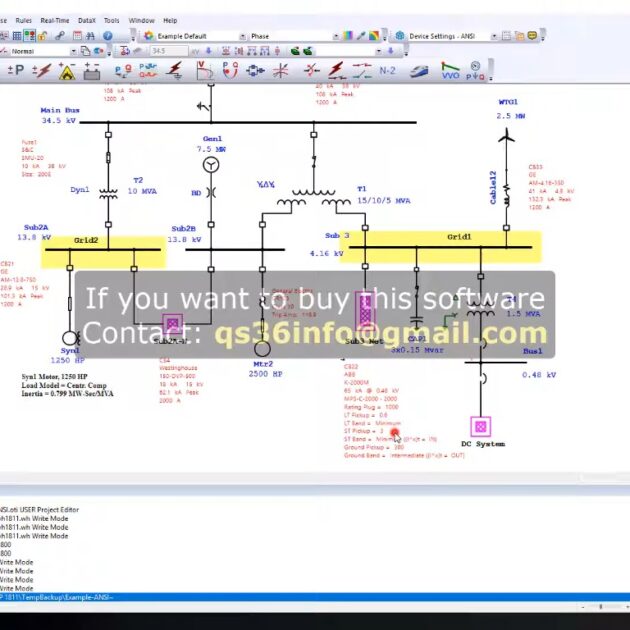Description
PLS-CADD 16.20 Crack PLS-POLE TOWER CAISSON
PLS-CADD 16.20 is the most powerful overhead power line design program on the market. PLS-CADD runs under Microsoft Windows and features an easy to use graphical user interface. It integrates all aspects of line design into a single stand-alone program with a simple, logical, consistent interface. No other program can match the sophisticated engineering capabilities available in PLS-CADD. This sophistication and integration lead to more cost-effective designs being produced in only a fraction of the time required by traditional methods. The PLS-CADD solution is so clearly superior to any alternative that it has been adopted by more than 1600 organizations in over 125 countries.
At the heart of PLS-CADD, Crack is a sophisticated three-dimensional engineering model. This model includes the terrain, the structures, and all the wires. The model can be viewed in several different ways: profile views, plan views, plan & profile sheets, 3-D views, staking lists… The PLS-CADD model is much more than just a picture or CAD drawing since PLS-CADD Crack understands the relationship between these elements. When you drag a structure of the current alignment PLS-CADD will generate new profiles and update all affected structure and wire positions. The effects of this structure move will be instantly visible in all views including the plan & profile sheet view. In PLS-CADD Crack you concentrate on designing your line instead of wasting your time drafting.
PLS-CADD easily adapts to the wide range of technologies used for line surveys including total station instruments, airborne lasers, and photogrammetry. It accepts survey data in both the plan and the profile coordinate systems. Survey data can be keyed in, can be digitized using the built-in heads-up digitizer, or can be electronically imported from a survey data file. PLS-CADD 14.20 Crack has a customizable data import routine that can read a wide range of survey data formats. Superposition of planimetric maps and aerial photographs can be used to better visualize the area around your line. When sufficient data are available PLS-CADD 16.20 can give you an even better perspective using contour lines, color renderings, and even draped aerial photographs.
PLS-CADD’s engineering functions are very flexible and are easily adapted to conform to your standards. You start by defining the combinations of wind, ice, temperature, and safety factors you wish to use. Next, you tell the program which combinations to use for loading trees, for insulator swing checks, for clearance checks, wire tension checks… PLS-CADD will check things your way. You can work in either imperial or metric units and can even switch back and forth between these unit systems. The fact that over 125 countries use PLS-CADD is a testament to its adaptability to a wide range of standards.
PLS-CADD supports both automatic and manual spotting. With manual spotting, you use the mouse to add, delete, edit, or move a structure. In automatic spotting, the program spots structures for you to obtain the lowest cost design possible subject to your constraints. Automatic spotting often results in designs as much as 10% lower in cost than human-generated designs. PLS-CADD gives you the best of both the automatic and the manual spotting worlds: cost and time savings while still maintaining control.
PLS-CADD 16.20 Crack
PLS-CADD has built-in sag-tension routines. You can quickly display your line in 3-d for any weather condition complete with insulator swings and wire blowout. Clearances from wires to ground or between phases can also be calculated under any weather conditions. Loading trees, stringing charts, galloping ellipses, IEEE Std. 738 and Cigre Brochure 207 thermal ratings, and offset clipping results are all easily accessed. PLS-CADD goes beyond ordinary sag-tension programs. Running ACSR conductors at a high temperature can cause the aluminum strands to go into compression. Most sag-tension programs do not model this effect and thus underestimate the sags. PLS-CADD can model your line both with and without the compression effect so you can see how severe it is.
Like most line design programs, PLS-CADD uses ruling span approximations in its sag-tension calculations. Unlike these other programs, PLS-CADD can work together with our SAPS multi-span finite element sag-tension program when the ruling span isn’t appropriate. When used in this manner PLS-CADD bypasses its built-in sag-tension routine and uses SAPS instead. This allows modeling of broken conductors, unbalanced ice, marker balls, and flexible structure scenarios that are incompatible with ruling span approximations. It also allows fixing the length of wire in each span to see the impact of moving structures, inserting structures, or cutting out wire in an existing line.
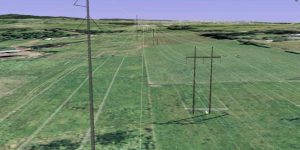
Key Features:
- A Microsoft Windows 7, 8, or 10 (all x64 only) environment that lets you:
- Run-on powerful yet inexpensive computers
- Use the most common graphical user interface (GUI) in the world
- Print reports and plot drawings directly on a wide variety of printers and plotters
- Run the user interface in English, French, or Spanish
- A 3-dimensional terrain model (including automatic TIN triangulation) that lets you:
- Select your route by clicking the mouse on line angle points
- Move structures in the plan or profile views
- Automatically generate centerline or side profiles
- Identify any terrain or obstacle with a unique feature code and symbol
- Automatically draw the required vertical clearance line for any specified voltage
- Render terrain in color by elevation and light incidence
- Import terrain data from GPS, photogrammetry, or total station surveying equipment
- A simple system for strength and clearance design criteria that lets you specify:
- Weather cases with the individual wind, ice, temperature, and reliability adjustments
- Load factors for checking the strength of the structures
- Cable conditions (Initial, after Creep or after Heavy load)
- A 3-dimensional model of the line that lets you:
- Represent all structures with all attached cables and insulators
- Select structures and cables from user-editable libraries
- Spot structures interactively or automatically (global cost optimization)
- String and sag the line interactively or automatically
- Perform any sag and tension calculation, including the effect of creep
- Select various conductor models to better represent behavior at high temperature
- Determine complete design loading trees
- Compute vertical or lateral clearances from ground or obstacles to any cable
- Check structure strength by allowable wind and weight spans methods
- Check structure strength by a direct link to structural analysis programs
- Check clearances between conductors and structures (including guy wires)
- Visualize the line in 3-d with actual wind blowout and insulator swings
- A graphics system that lets you:
- Generate plan & profile sheets automatically
- Control drawing scales and page layout
- Plot directly or send drawings to a commercial CAD system
- Export plan & profile sheets to PDF (requires Adobe Acrobat)
- Superpose aerial photographs or maps on your plan view
- Digitize scanned plan & profile drawings
- A material management system that lets you:
- Import parts, assemblies, and labor units from existing databases
- Automatically generate structure costs for optimization
- Automatically generate material lists for construction

